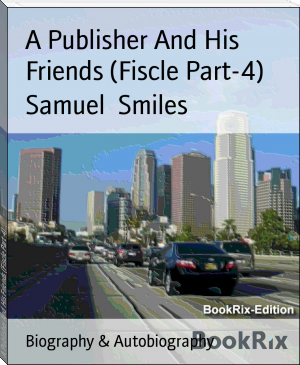From Silicon Valley to Swaziland by Rick & Wendy Walleigh (read aloud txt) 📖
- Author: Rick & Wendy Walleigh
- Performer: -
Book online «From Silicon Valley to Swaziland by Rick & Wendy Walleigh (read aloud txt) 📖». Author Rick & Wendy Walleigh
I had prawns for a main course, and Wendy had some type of Middle Eastern chicken, but we started with several varieties of hummus and pita bread. The décor was simple but charming, and we felt very cozy sitting outside by a fire. However, the most unusual part of the evening was the music. On Friday nights, the restaurant had live music performed by a local duo, one on guitar and the other on keyboard. At first, they were playing instrumentals, some of which were recognizable American tunes. Then it got more interesting. This African duo, in the Lebanese restaurant, started singing, and the first few songs they sang were Kenny Rogers’s hits. They went into more country tunes and other popular U.S. hits. Then it really got international. The African duo, in the Lebanese restaurant, in Nairobi, Kenya, began singing a familiar Mexican song, in Spanish, with a Swahili accent. It was delightfully bizarre and definitely a time and place for all nationalities. We had a great evening.
After dinner, Wendy was a little nervous about walking back. I wasn’t, perhaps because of the wine I’d had with dinner. In any case, the walk back was uneventful. There was no one else out walking at that time of night. As we walked back to the guardhouse in front of our apartment and through the large security gate, we wondered what the guards must be thinking about the crazy Wazungu (Swahili word for white people, sometimes used to mean crazy white people, so crazy Wazungu could be considered redundant) who went out walking in Nairobi at night. Eventually Wendy forgave me for coercing her, but we did not walk to the Phoenician at night again.
For a while, I was feeling quite comfortable with the issue of personal safety, but then the concerns came back. I heard rumors going around the office about a robbery and a shootout at a bank only a half-mile from our office. The robbers were supposedly linked to some other criminal activity that had taken place only shortly before in another part of Nairobi. The details were unclear and confusing. The next morning’s paper clarified some details but raised more questions than it answered.
Excerpts from an article in the Kenya Times, May 18:
Bloodbath in the city
4 cops, 6 thugs killed in shoot-out
By MAXWELL MASAVA
GUNMEN took over control of parts of Nairobi yesterday killing four police officers in what was feared could have been a well-orchestrated killing mission. Three other officers were injured and rushed to hospital in critical condition.
A stab in the country’s security shield, the death drama saw gun-wielding criminals eliminate a CID officer, an administrative policeman and a uniformed policeman in three separate incidents within a span of two hours.
But the officers immediately hit back with ferocity that saw six gangsters killed and a cache of firearms recovered, in the orgy that reminisced scenes of Wild West movies…
At Greenfields estate off Jogogo road, a lone police officer who was on undercover mission to investigate the movement of a stolen car ran into a gang of three men who sprayed him with bullets before escaping with his pistol…
But as the killing was being carried out in Greenfields, more drama was unfolding in Nairobi’s River Road area where a police mission to smash a criminal gang turned tragic with one of the officers being shot dead on the scene…
In a quick retaliation, the other group of officers gunned down all the three gangsters and recovered one AK 47 rifle, four pistols and several rounds of ammunition. The officer died while he was being rushed to hospital for treatment…
At Westlands, another group of gunmen were plotting a robbery at Barclays Bank next to Landmark Hotel where [an] unknown amount of money was stolen. An administration policeman who was part of the cash-on-transit escorting team was shot and killed. His two colleagues sustained serious bullet wounds after an exchange with the robbers.
Sources say another officer died while being rushed to hospital by his colleagues. A passerby caught in the middle of the shoot-out was also killed. A body of a gangster believed to have been shot during the bank raid was found dumped along Peponi road in Westlands a few hours later. Two more suspects were killed near City Park after they were trailed by police for more than two hours.
Police Spokesman Erick Kiraithe said police were aware of those planning to commit criminal activities across the country and warned that “criminals’ days were numbered and that they should expect a full force of the law.” He would not, however, rule out any possible link between yesterday’s killings to the current circulation of leaflets inciting members of the public against the government.
The killings in Nairobi came as police in Central province confirmed that they had arrested a suspect in connection with the circulation of leaflets in the province.
According to reports, the suspect was said to have confessed to having received money from unnamed people in Nairobi to circulate the leaflets which called on members of the public to arise and fight the current government.
The arrest comes in the wake of police investigations on the circulation of leaflets calling on people believed to be adherents of the outlawed Mungiki sect to arise and protect themselves from alleged government harassment and intimidation.
This was our up close and personal (The Barclay’s bank that was robbed was a quarter mile from our apartment, and we had used their ATM several times.) introduction to the clandestine and dreaded Mungiki. We had previously heard about killings in Central Kenya (including several beheadings) but hadn’t paid close attention. With events happening in our neighborhood, we became very attentive. We wanted to know who these Mungiki were and why they were doing these terrible things. To satisfy our curiosity, we began asking questions, but the answers we got weren’t always straightforward.
As with most aspects of the Mungiki story, their origins are shrouded in mystery. From most accounts we heard, the Mungiki began in the 1980s as either a self-defense force or political action group (depending on your sympathies) promoting the rights and protection of the Kikuyu, Kenya’s largest tribe. Supposedly, they modeled themselves on the Mau Maus who led the rebellion against British colonialism in the 1950s. After some years of political action (perhaps peaceful or perhaps violent), the Mungiki morphed from their original form into more of a religious cult whose members wore dreadlocks and promoted traditional rituals such as female circumcision. During this period, the Mungiki seemed responsible for more fear than criminal action. However, in their next incarnation, the Mungiki abandoned any pretense of adhering to principle and became a dangerous, mafia-type gang. Migrating from central Kenya to Nairobi, the Mungiki established criminal enterprises, the most well-known of which were the protection racket and extortion of the matatu (public minibus) trade.
The Mungiki seemed to still have ties to politics and employed ethnic-based violence to influence elections. They seemed to be available to serve whatever politician would hire them. Rumors also swirled that the Mungiki had ties to the highest levels of government and bribed the police to minimize interference in Mungiki affairs. As with the original protection schemes of the Italian mafia, some people initially welcomed the intervention of the Mungiki. At least with one dominant gang, some people felt they weren’t in danger from multitudes of independent petty criminals or wars among lesser gangs. They knew who the boss was and felt safe as long as the appropriate tribute was paid.
The matatu drivers felt differently. They received no benefit from being forced to make daily extortion payments to Mungiki members. In most cases, they felt powerless to resist, but during our time in Nairobi, the matatu drivers staged a strike hoping to get the government to take action against the extortionists. The matatu drivers’ strike crippled Nairobi transportation for a day and kicked off one of the numerous battles in the Mungiki wars of 2007. Several outspoken matatu drivers and local Mungiki leaders were killed in a series of back and forth reprisals. Some were killed in particularly horrific ways, such as being trapped inside as their houses were burned around them.
A few weeks later, two police officers were shot and killed in the Mathare slum in Nairobi. The next night, the police stormed Mathare looking for the culprits (presumably Mungiki) who had killed the officers, as well as Mungiki members who had been implicated in a string of beheadings. The police killed twenty-two and arrested over one hundred during extended gun battles. In the meantime, the beheadings continued and so did the police crackdown. After the incident in Mathare, it was rare to hear of anyone being arrested, but the killings on both sides continued. By the end of June, the combined death toll was over fifty. Speculation continued about the Mungiki’s aim to destabilize the country before the upcoming presidential elections.
For weeks, there seemed to be battles going back and forth between police and the Mungiki. The Mungiki would kill some low-level politicians or police officers, anyone representing the government, often in horrific ways. Then the police would stage a large raid on supposed Mungiki compounds and rarely took prisoners. Politicians would make pronouncements and citizens expressed increasing outrage. For a while, the police seemed to be initiating most of the battles, and then it all seemed to stop. It just wasn’t in the news anymore. There was a lot of speculation on what had happened, but apparently, nobody really knew or was willing to say. The predominant story was that the president had become enraged with the lawless killings and had forcefully ordered his security forces to fix the problem. The speculation was that at this point, any political allies of the Mungiki could no longer protect them and the police got free rein to go after them using whatever force and tactics they felt necessary. It wasn’t until many months later that any information surfaced, but when it did, the speculation was essentially confirmed.
Nov 8th, NAIROBI
From The Economist print edition
Who is to blame for a spate of execution-style killings?
SINCE the summer, 454 bodies have been dumped in mortuaries, mainly in or around Nairobi, the capital, most of them shot in the back of the head. They had all been killed by “state security agents”—at least, that was the extraordinary claim made this week in a report by Kenya’s official human-rights commission. The police, it added, had shown little interest in investigating the deaths and had obstructed the commission’s work.
The report seems to confirm rumours that the interior ministry organised an undercover squad to hunt down and kill members of the Mungiki sect, a Kikuyu gang that has terrorised central Kenya on and off for years, not least by decapitating its victims. Mungiki foot-soldiers have also been used by politicians to rough up opposition supporters, but a killing spree earlier this year was a step too far. In June the government ordered a crackdown. Many Mungiki leaders have since disappeared.
The head of the police, Hussein Ali, denies any wrongdoing. Where, he asks, is the evidence? The report, he says, showed the “level to which the human rights commission had degenerated”; the dead were killed in car crashes or in gang





Comments (0)